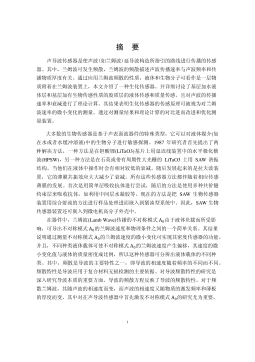影响农民工子弟学校学生学业成绩的实证研究——以北京市为例
I摘要20世纪90年代以来,流动人口中的少年儿童数量急剧增加,流动儿童成为流动人口中的一个特殊部分。由此产生的流动儿童的教育问题,成为现实生活本身提出来的新课题,引起社会的广泛关注。从以往对城市流动儿童的研究来看,主要是针对农民工子弟学校中流动儿童教育状况的研究,而对他们的学业成绩关注不足,而实际上学业成绩一直以来都是人们最为关注的教育结果。因此我们对流动儿童的关注不应仅仅停留在这些孩子是否有学可上,而是更应该关心他们到底是否受到了优质平等的教育。因此笔者希望在这一方面作进一步的探索研究,也希望了解在当前教育环境下影响农民工子弟学校学生学业成绩的众多因素,并试图分析影响农民工子弟学校学生学业成...
相关推荐
-
10KV电网D-SCADA 系统信息采集与故障诊断研究与设计VIP免费

 2024-10-14 25
2024-10-14 25 -
方形吸顶散流器平送风等温射流特性研究VIP免费

 2025-01-09 7
2025-01-09 7 -
关于充液声导波传感器中频散兰姆波的研究VIP免费

 2025-01-09 10
2025-01-09 10 -
结合梁斜拉桥施工过程中考虑剪力滞影响的分析方法VIP免费

 2025-01-09 6
2025-01-09 6 -
空调房间热舒适性的数值模拟与实验研究VIP免费

 2025-01-09 7
2025-01-09 7 -
汽车前轮线控转向系统研究VIP免费

 2025-01-09 8
2025-01-09 8 -
输入分配型混合动力车辆动力系统控制策略研究VIP免费

 2025-01-09 7
2025-01-09 7 -
双馈风力发电系统的柔性并网控制研VIP免费

 2025-01-09 9
2025-01-09 9 -
污水处理厂污泥好氧堆肥发酵技术的试验研究VIP免费

 2025-01-09 7
2025-01-09 7 -
应用风室试验装置的风机性能VIP免费

 2025-01-09 8
2025-01-09 8
相关内容
-

汽车前轮线控转向系统研究
分类:高等教育资料
时间:2025-01-09
标签:无
格式:PDF
价格:15 积分
-

输入分配型混合动力车辆动力系统控制策略研究
分类:高等教育资料
时间:2025-01-09
标签:无
格式:PDF
价格:15 积分
-

双馈风力发电系统的柔性并网控制研
分类:高等教育资料
时间:2025-01-09
标签:无
格式:PDF
价格:15 积分
-

污水处理厂污泥好氧堆肥发酵技术的试验研究
分类:高等教育资料
时间:2025-01-09
标签:无
格式:PDF
价格:15 积分
-

应用风室试验装置的风机性能
分类:高等教育资料
时间:2025-01-09
标签:无
格式:PDF
价格:15 积分






